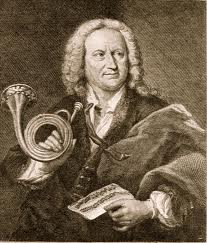Cantata No. 78
Bach composed this cantata in Leipzig in 1724 “for the 14th Sunday after Trinity.”
The cantata is in seven parts. It opens with a majestic chorus based upon a chromatic descending bass line. The choral passages are an interplay between the alto, tenor and bass lines, with the sopranos joining in with the choral melody. The initial orchestral motif is in turn taken up by the chorus; other themes that Bach first gives to the chorus are then taken up by the strings and winds. T
he following movement is a soprano-alto aria (sung today by the women’s chorus), the text beseeching help from above and the music charming in its dance-like motifs. Tenor and bass recitatives and arias follow, with initial forebodings ending in religious affirmations. The closing chorale ends this work on a note of hope.
Suite for Strings
This Suite unites music from the dramatic output of Purcell. Barbirolli, the famous English conductor, took excerpts from “The Gordian Knot Untied,” “Dido and Aeneas” and “King Arthur” and re-orchestrated them slightly, mostly by giving the sung lines of arias to solo instruments.

Suite No. 4 in D Major
As part of his vast output of vocal and orchestral works, Bach wrote four orchestral suites (or “ouvertures”), probably between 1724 and 1739. They are based on the 18th-century “French style” of overture – a slow opening section with a faster middle section, followed by a variety of dance movements.
Bach’s Fourth Suite is brilliantly scored for trumpets, oboes, timpani and strings, and features all of these forces in its scope.
From the Performance of Fall, 2017.
Ouverture
Bouree I and II
Gavotte
Menut I and II
Rejouissance
It begins with a magnificent overture, followed by a lively fugue in 9/8 time showcasing Bach’s mastery of counterpoint, concluding with the stately opening procession.
The following four dance movements are diverse, each showcasing different sections of the orchestra. Trumpets, oboes and bassoon feature in the lively Bourrée and robust Gavotte; woodwinds and strings combine in an elegant Menuet, with a middle section scored for solo strings.
The Suite ends with a rousing Réjouissance (literally, rejoicing or celebration) featuring the entire ensemble.
Suite in G Major for Strings and Continuo
Johann Pachelbel (1653-1706) was born in Nuremberg and served as court organist in a number of churches in central and southern Germany. He influenced many composers of his generation and later, including Johann Sebastian Bach.
Aside from his well-known Canon in D Major, Pachelbel wrote quite a few instrumental and keyboard works. The Suite in G Major is scored for 5 string parts (2 violins, 2 violas and continuo). It consists of a short, majestic overture with dynamic contrasts, followed by 5 dance movements.